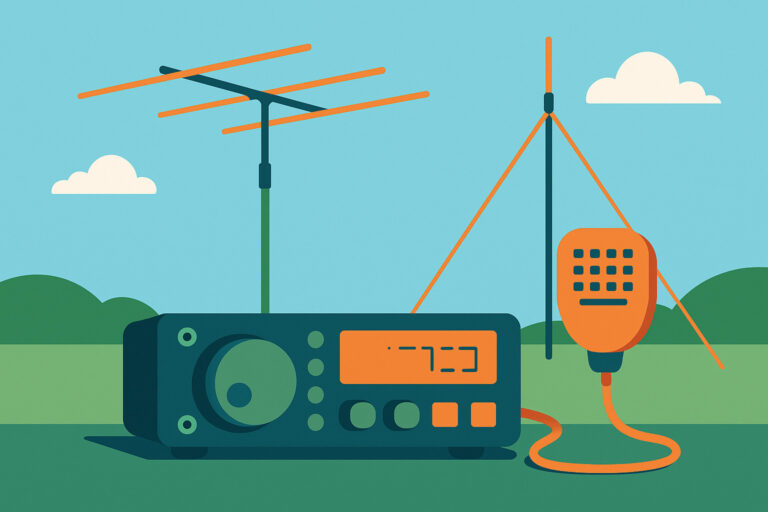Mastering EchoLink: A Comprehensive Guide to Remote Ham Radio Operation
Remote ham radio operation has never been easier, thanks to digital technologies like EchoLink that bridge vast distances with the power of the internet. For licensed amateur radio operators looking to connect with friends, experiment with radio technologies, or participate in nets across the globe, EchoLink is a game-changer. Whether operating from your home shack, a remote cabin, or even while traveling, you can access a worldwide network of fellow hams—all from your computer or mobile device.
Mastering EchoLink: A Comprehensive Guide to Remote Ham Radio Operation
Introduction to EchoLink
EchoLink stands out in the world of amateur radio for its innovative use of internet technology to enable real-time communication between ham operators. Rather than being limited by radio propagation or antenna range, EchoLink users enjoy seamless global connectivity. EchoLink allows licensed Amateur Radio stations to communicate over the Internet using streaming-audio technology, enhancing global communication capabilities. This means you can join QSOs with other hams anywhere in the world, participate in nets, or simply chat one-on-one.
The platform has seen tremendous adoption since its launch. EchoLink has over 350,000 validated users worldwide across 159 countries, with about 6,000 online at any given time. This thriving community ensures there is always someone to connect with, no matter the hour. EchoLink’s flexibility and broad accessibility have helped make it a cornerstone of the modern ham radio landscape.
For those who enjoy experimenting with new modes of operation, EchoLink is a perfect entry point into digital voice communication. It’s also a valuable resource for operators limited by antenna restrictions or who want to explore the world of remote station control.
Setting Up EchoLink for Remote Operation
Getting started with EchoLink is straightforward, but it does require a few important steps to ensure compliance and smooth operation. The first requirement is licensing: EchoLink requires users to provide proof of a valid amateur radio license before granting access to ensure only licensed operators use the system. This validation process protects the integrity of the ham radio community and ensures all users are legitimate operators.
Once you’ve gathered your license documentation, the next step is to download and install the EchoLink software. EchoLink is available for Windows, Android, and iOS platforms, providing flexibility for users across different devices. This multi-platform approach means you can operate EchoLink from your home PC, a laptop, or even on the go with a smartphone or tablet.
- Windows: Download the EchoLink software and follow the installation prompts. The program requires a stable internet connection and a microphone/headset for voice communication.
- Android/iOS: The EchoLink app is easy to find in the respective app stores. The EchoLink app has been downloaded over 770,000 times and has a rating of 3.95 out of 5 stars based on 6,679 reviews. The mobile interface is intuitive, making it easy to connect from virtually anywhere.
After installation, you’ll create an account and submit your license for verification. EchoLink’s validation team typically processes requests within a day or two. Once validated, your callsign will be added to the global EchoLink directory, and you’ll be ready to connect with other hams around the world.
For those wishing to link their physical radios to the EchoLink network, you’ll need to set up a node using your radio, a computer, and an interface device. This allows local RF users to access EchoLink and connect with internet-linked stations worldwide. Detailed configuration guides are available at https://hamradioplayground.com to help you get started with node operation.
Navigating the EchoLink Interface
EchoLink’s interface is designed with usability in mind, but a bit of orientation can help you get the most from its features. Once you log in, you’ll be greeted by a list of available stations, which include single-user stations, conference servers, and repeater or simplex links. The interface lets you easily search for specific callsigns, locations, or node types.
The main dashboard provides these key elements:
- Station List: View all currently available stations, organized by country, callsign, or type (user, link, repeater, conference).
- Search Bar: Quickly find a specific station by entering a callsign or node number.
- Status Indicators: See which stations are online, busy, or available for connection.
- Connection Panel: Displays your current connection, QSO duration, and allows you to disconnect or adjust audio settings.
- Audio Controls: Adjust microphone sensitivity, speaker volume, and other sound preferences for clear communication.
On mobile devices, the EchoLink app streamlines the desktop experience, offering simple touch controls for station selection, PTT (push-to-talk) operation, and call management. The app’s interface is optimized for smaller screens without sacrificing functionality. Whether you’re on the move or at home, you’ll find the EchoLink interface approachable and effective for managing your remote ham radio activities.
Take time to explore the settings menu, where you can configure audio devices, set up notifications, and manage security preferences. Familiarizing yourself with these options will help you tailor EchoLink to your operating style, ensuring a smooth and enjoyable experience every time you connect.
Connecting to Remote Stations
One of EchoLink’s most exciting features is its ability to connect you with remote stations anywhere in the world. Here’s how you can make the most of this capability:
- Browse or Search for Stations: Use the station list or search bar to find a node, repeater, or conference that interests you. Stations are identified by callsign, location, and node type, making it easy to find contacts in specific regions or with certain interests.
- Select and Connect: Once you find a station, simply highlight it and hit the ‘Connect’ button. If the station is busy, you may need to wait or try another station.
- Push-to-Talk: After connecting, use the PTT button to transmit your audio. Remember to leave a brief pause before speaking to ensure your first words are not cut off, particularly if connecting to a repeater or conference server.
- Monitor the QSO: Listen carefully to ongoing conversations before jumping in. Many stations maintain regular nets or scheduled discussions, so be courteous and wait for a natural break before introducing yourself.
- Disconnect Properly: When your QSO is finished, be sure to disconnect using the interface. This frees up the node for other users and ensures good operating etiquette.
EchoLink’s network isn’t just about one-on-one QSOs. You can also join large conference servers, participate in special interest groups, or connect with local repeaters that are internet-linked. This diversity of connection options makes EchoLink a powerful tool for both casual chat and organized group activities.
For those interested in international contacts, EchoLink is a gateway to the global ham community. With stations online from every continent, you’ll always find new contacts and fresh opportunities to practice your radio skills.
Best Practices for Effective Communication
To make the most of EchoLink and ensure a positive experience for everyone, it’s important to follow some best practices. Good operating habits help maintain the quality of communication and reflect well on the amateur radio community.
- Identify Clearly: Always give your callsign at the beginning and end of your transmission, and periodically during longer QSOs.
- Listen First: Before transmitting, listen to ongoing conversations or nets. Wait for a natural break to introduce yourself.
- Keep it Brief: Be concise with transmissions, especially when using conference servers or busy repeaters.
- Respect Local Customs: Follow any specific rules set by the node or repeater operator. Some may have time limits or topic guidelines.
- Maintain Audio Quality: Test your microphone settings and speak clearly to avoid distortion or background noise.
- Be Patient and Courteous: Technical glitches can happen—exercise patience and help others when possible, especially newcomers.
By following these best practices, you help foster a welcoming environment on EchoLink and uphold the traditions of amateur radio. Good etiquette ensures everyone enjoys clear, friendly, and purposeful communication.
Troubleshooting Common Issues
Even with its user-friendly design, EchoLink users may occasionally encounter technical issues. Fortunately, most problems can be resolved with a bit of troubleshooting. Here are some common issues and solutions:
- Audio Problems: If others report poor audio, check your microphone and speaker settings. Make sure you’re using a quality headset or microphone, and adjust levels in the EchoLink settings menu.
- Connection Errors: If you can’t connect to a station, verify your internet connection. Firewalls or network restrictions can sometimes block EchoLink’s ports; consult the EchoLink help files for port configuration details.
- Validation Delays: If your account isn’t validated, ensure you’ve submitted clear and complete license documentation. Processing typically takes 24–48 hours but can be delayed if details are missing.
- Echo or Feedback: If you hear an echo during QSOs, use a headset instead of speakers to prevent audio feedback.
- App Crashes or Freezes: On mobile, try reinstalling the EchoLink app or updating your device’s software. On desktop, check for EchoLink software updates.
If you continue to experience issues, the EchoLink user community and resources at https://hamradioplayground.com are excellent sources of support. Don’t hesitate to reach out for help—there’s a good chance another operator has encountered (and solved) the same problem.
With a little patience and the right know-how, you’ll soon be enjoying seamless remote ham radio operation using EchoLink.







